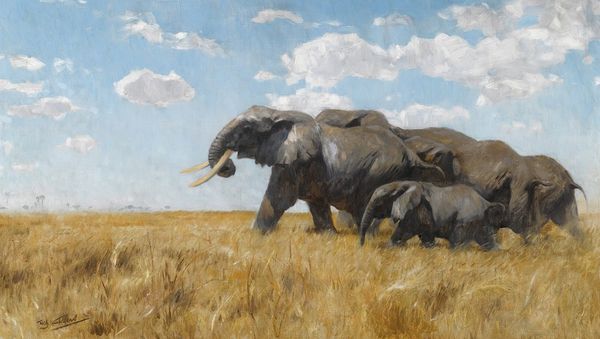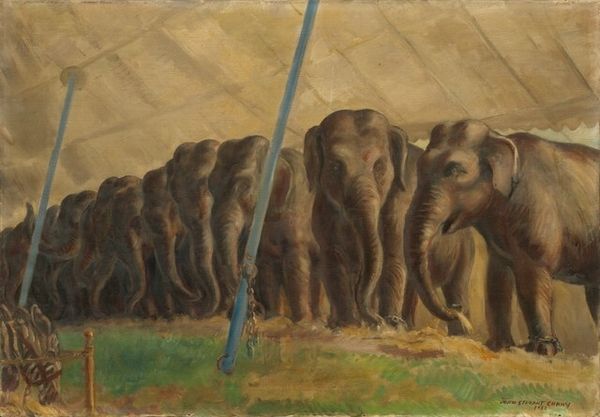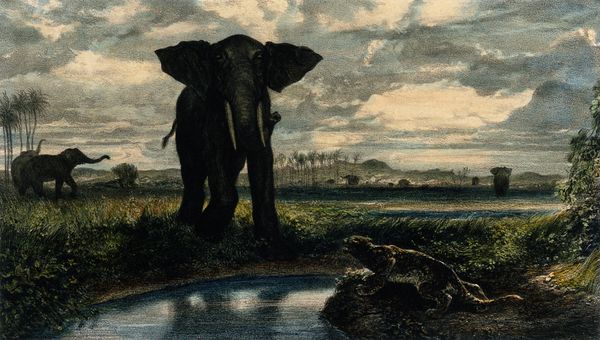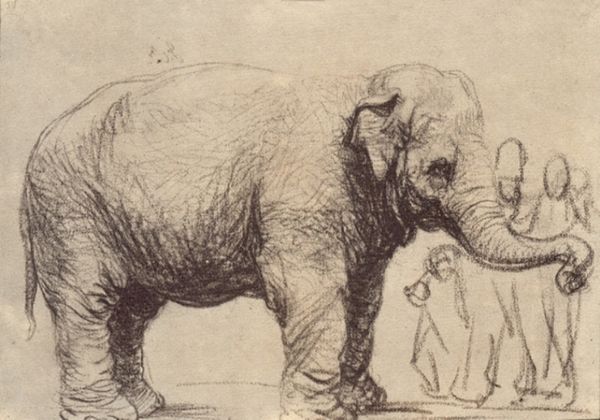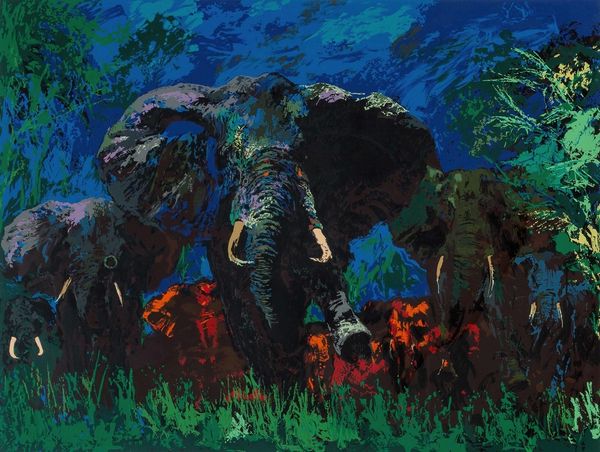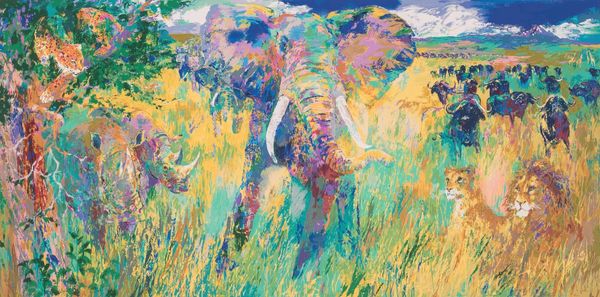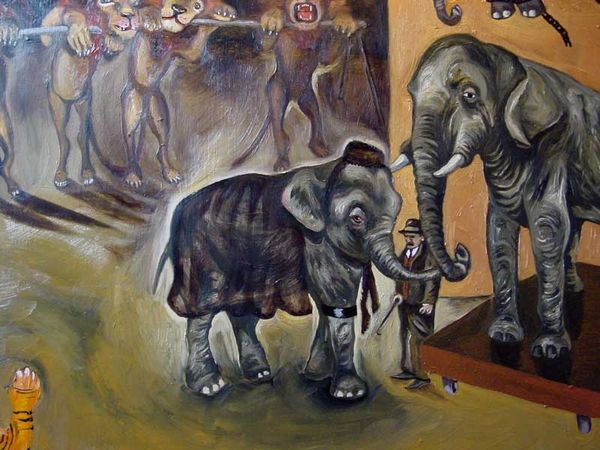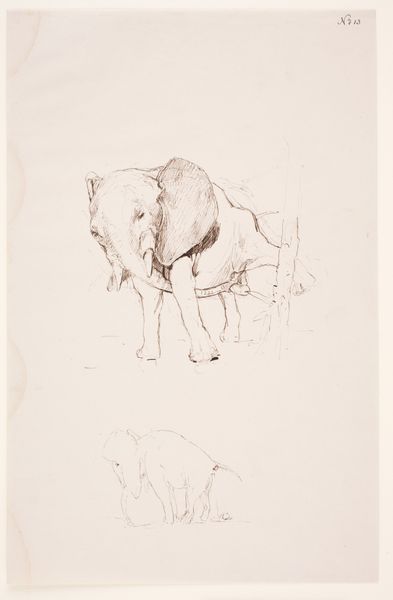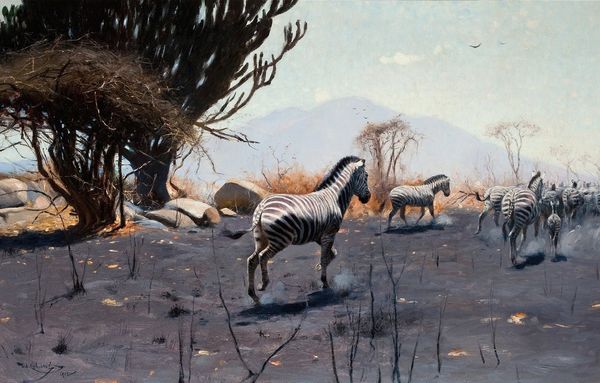
painting, oil-paint
#
animal
#
painting
#
oil-paint
#
landscape
#
oil painting
#
orientalism
#
realism
Dimensions: 48.9 x 66 cm
Copyright: Public domain
Curator: "Elephants of Bekanir" by Edwin Lord Weeks captures a vibrant, perhaps idealized, scene in India. It's rendered in oil paint with a clear affinity for realism and orientalism. Editor: My immediate reaction is one of gentle stillness. The muted, earthy tones, the almost hazy light... there's a palpable sense of heat and quiet observation. Curator: Yes, the orientalist aesthetic frequently played with romantic notions of the "exotic" East. I find myself pondering what symbolic role these elephants would play. In Hindu iconography, elephants are often associated with deities like Ganesha, embodying wisdom, strength, and good fortune. Editor: Symbolism aside, consider the structure. The strong diagonal of shadow leads the eye to the imposing form of the primary elephant. Its placement dominates the picture plane while the secondary figures, both animal and human, exist on a different, almost receding plane. Curator: Interesting. The artist gives these gentle giants weight, both literal and metaphorical, it makes one think about the cultural narrative being presented here, particularly how Weeks frames the human figures in relation to the animals. Are they in harmony, subjugation, something else entirely? I detect traces of a colonial perspective which tends to exoticize colonized peoples, perpetuating existing stereotypes. Editor: I see the subtle color shifts within the single hue employed and what they lend to the visual field overall, specifically concerning depth of field and form. Observe, too, how the texture of the brushstrokes—the artist’s direct intervention, materiality, as well—evokes a sensory experience; one almost feels the heat, the dry earth. Curator: Indeed. We're looking not just at elephants but at how Weeks constructs a whole visual narrative loaded with colonialist tropes. And within that perspective, we see symbols used for a cultural memory as constructed through a Western gaze, with a narrative imposed upon another. Editor: It seems we have both been informed, moved, perhaps troubled, by a scene that once existed so vividly through oil, brushstrokes and pigment, presented on a rectangular plane.
Comments
No comments
Be the first to comment and join the conversation on the ultimate creative platform.
